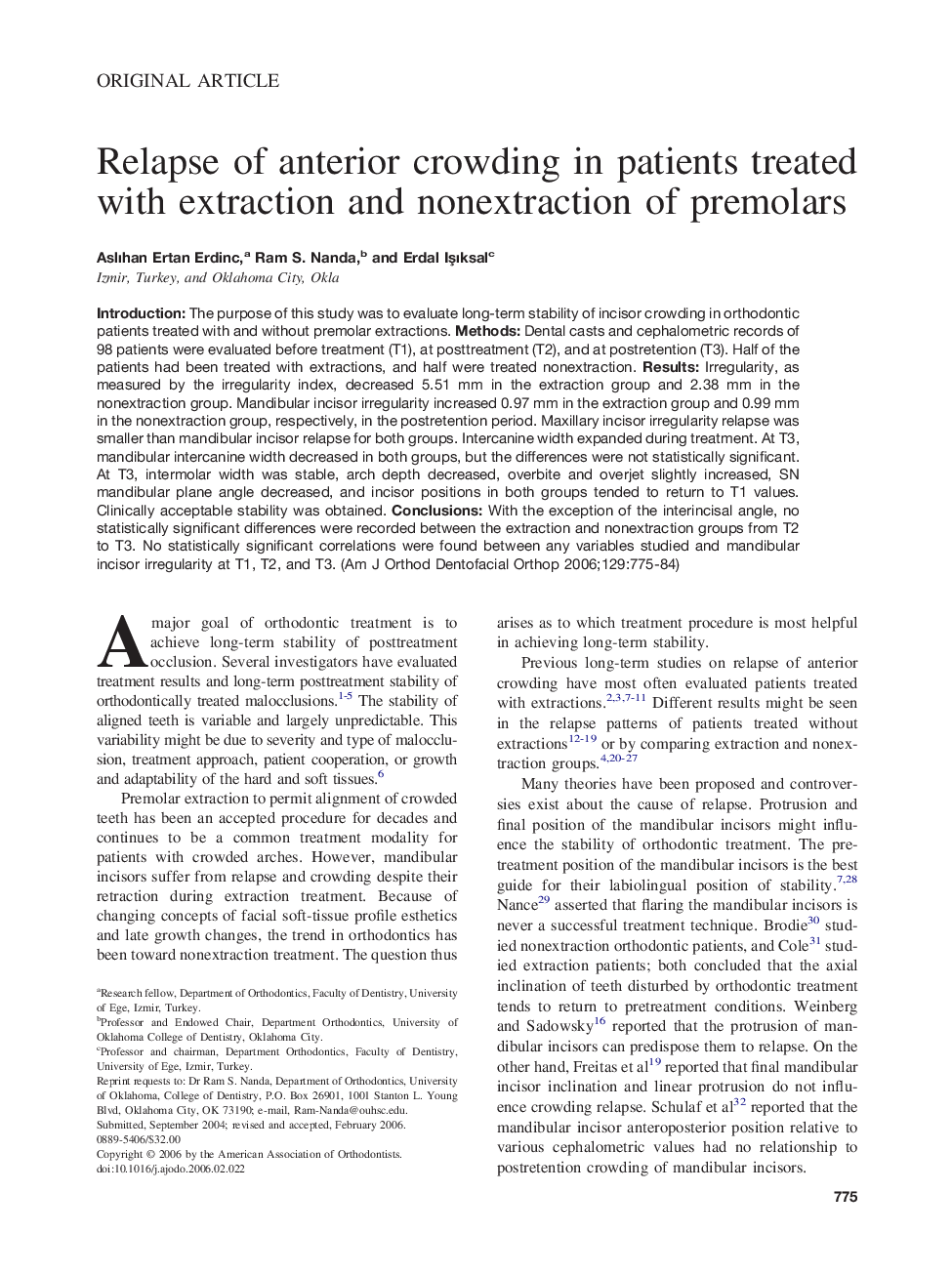| Article ID | Journal | Published Year | Pages | File Type |
|---|---|---|---|---|
| 3120158 | American Journal of Orthodontics and Dentofacial Orthopedics | 2006 | 10 Pages |
Introduction: The purpose of this study was to evaluate long-term stability of incisor crowding in orthodontic patients treated with and without premolar extractions. Methods: Dental casts and cephalometric records of 98 patients were evaluated before treatment (T1), at posttreatment (T2), and at postretention (T3). Half of the patients had been treated with extractions, and half were treated nonextraction. Results: Irregularity, as measured by the irregularity index, decreased 5.51 mm in the extraction group and 2.38 mm in the nonextraction group. Mandibular incisor irregularity increased 0.97 mm in the extraction group and 0.99 mm in the nonextraction group, respectively, in the postretention period. Maxillary incisor irregularity relapse was smaller than mandibular incisor relapse for both groups. Intercanine width expanded during treatment. At T3, mandibular intercanine width decreased in both groups, but the differences were not statistically significant. At T3, intermolar width was stable, arch depth decreased, overbite and overjet slightly increased, SN mandibular plane angle decreased, and incisor positions in both groups tended to return to T1 values. Clinically acceptable stability was obtained. Conclusions: With the exception of the interincisal angle, no statistically significant differences were recorded between the extraction and nonextraction groups from T2 to T3. No statistically significant correlations were found between any variables studied and mandibular incisor irregularity at T1, T2, and T3.
